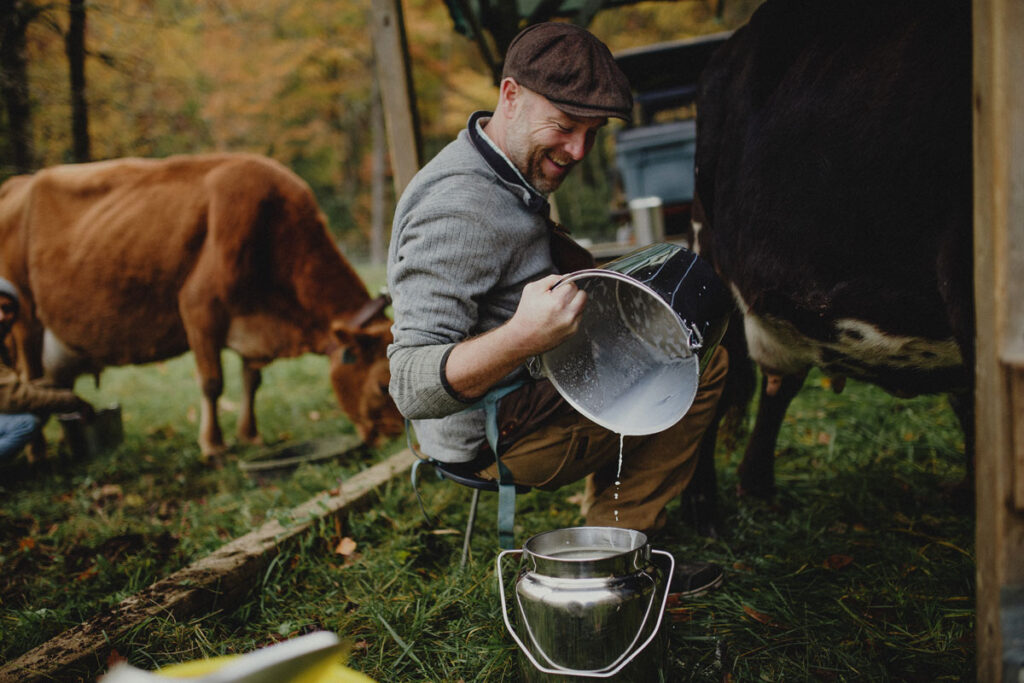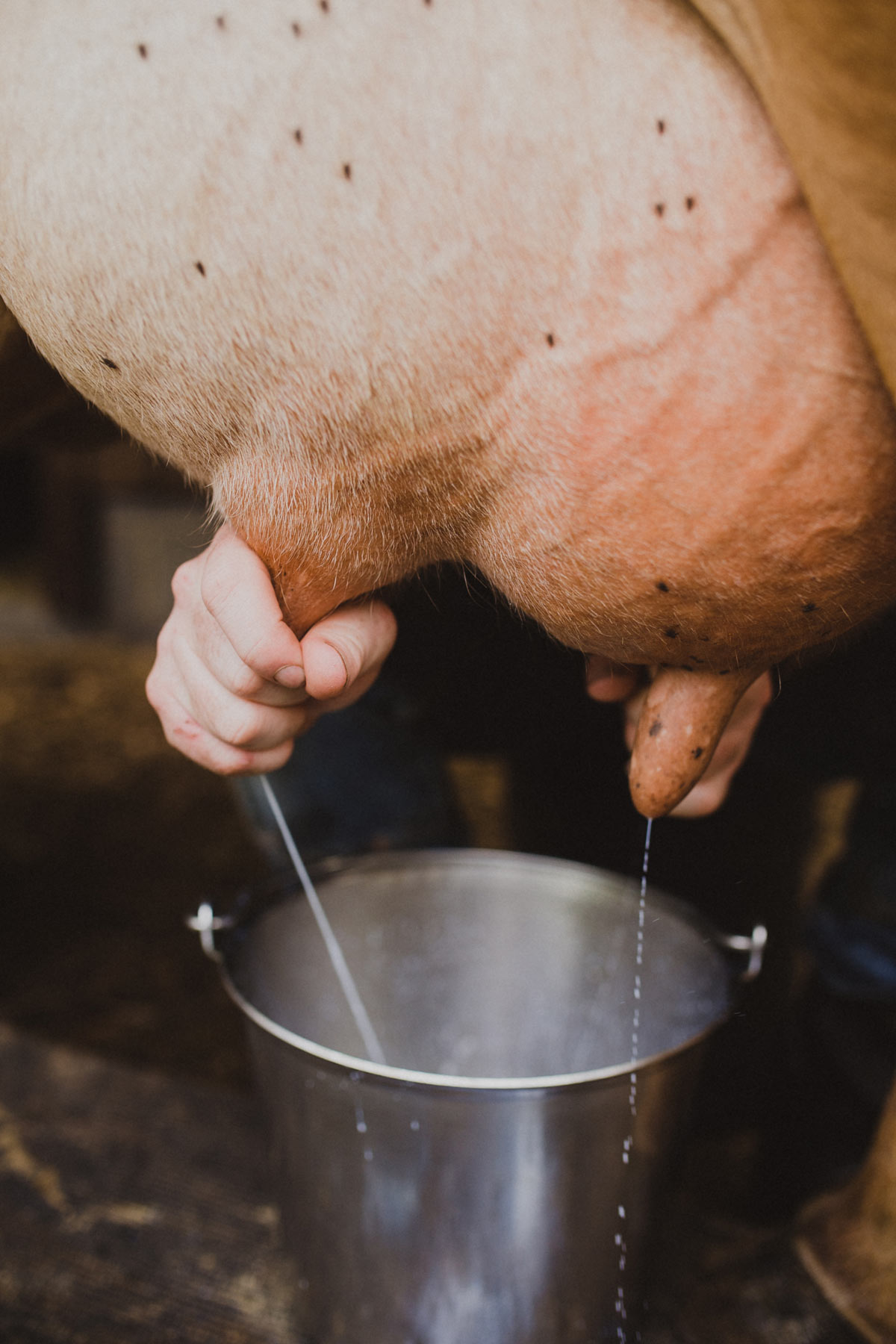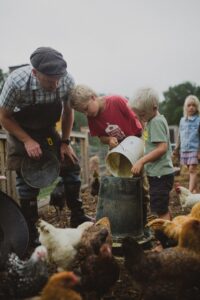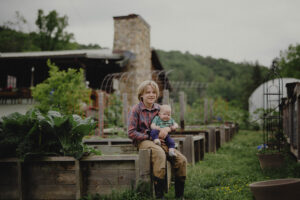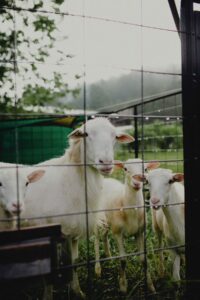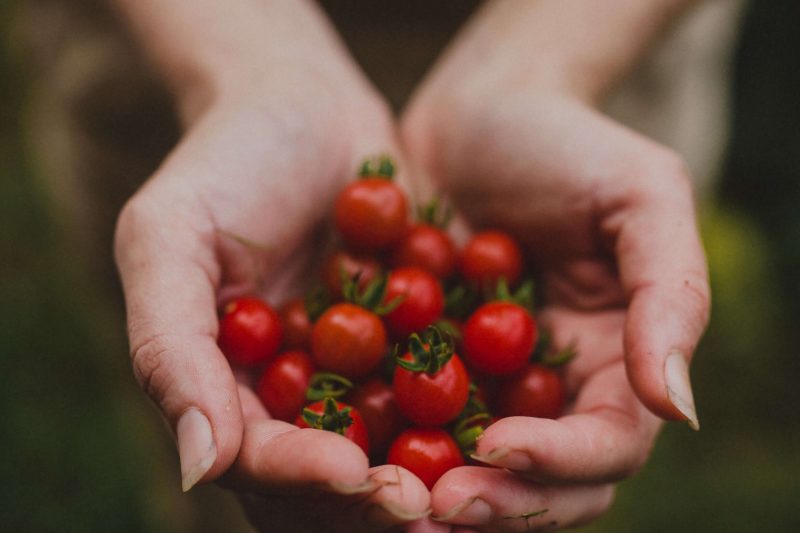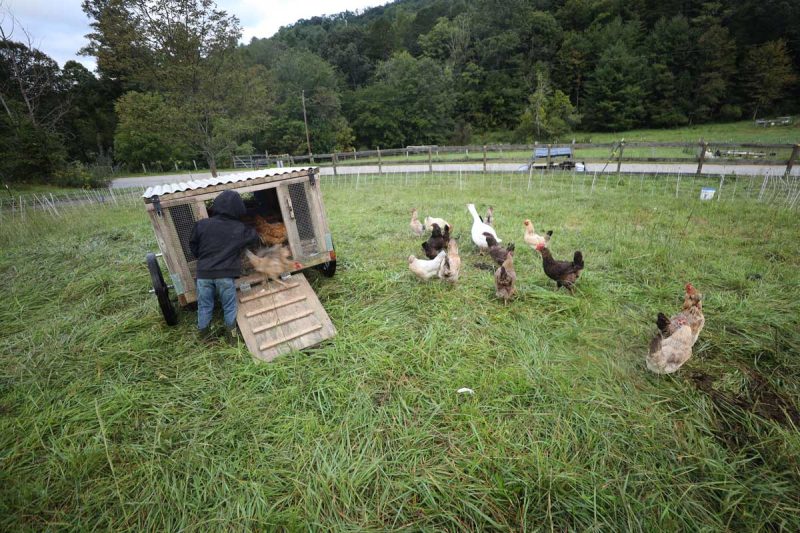Why I Milk in the Pasture
No Smell
It may seem like extra work to haul everything out to the cow to milk in the pasture. But there are a few reasons why we milk this way, and I’ll never go back to milking in the barn.
Cows poop upwards of 40-50 times per day. I don’t want that smell close to my house or lingering in my barn, and my biggest pet peeve is shoveling cow manure.

Rotational Grazing & Parasites
We’re on a rotational pasture system where our cows won’t return to the same pasture for 45 days, which is the lifecycle of parasites that live in their manure.
By moving our cows daily, they’re on fresh green pasture, we follow them up with the chickens, which scratch through the manure, eat the fly larvae and spread the manure to fertilize the field.
We then follow them up with sheep who eat the bramble and other brush the cows leave behind. This method works perfectly to keep all the animals and the pasture as healthy as possible.

Abundance Plus
In the video above, you’ll see how we used to milk the cow in the barn. But we’ve since changed to a mobile milking stanchion that we can pull along with the cows as they’re on a rotational grazing system.
If you want to see the video of how we milk in the pasture, you can sign up for a FREE seven-day trial of Abundance Plus. We release exclusive weekly video content inside A+, videos you won’t find on YouTube!
Anyone who signs up for A+ will also get exclusive discounts to Premier1, New Country Organics (where we get our organic alfalfa feed pellets), McMurray Hatchery, Johnny’s Selected Seeds, Meadow Creature and many more. So many people have told us the savings they get more than pays for the membership fee, which we love!

How Much Milk Does a Cow Give?
The amount of milk production will depend on what breed of cow you’re milking and if the cow has a calf on her. Our cow has a calf on her, and we are taking in 1-2 gallons daily.
Dairy cows can produce milk upwards of 7 gallons a day and need to be milked regularly, typically 2 times a day. It is an important part of preventing mastitis in cows.
If you let the calf have the full second milking, you will only need to milk your cow once a day.

How Long Does it Take to Milk a Cow?
It typically takes about 20 minutes to milk a cow but will take you much longer the first time you milk, probably 45 minutes. You may even need to train the cow to milk.
It can be a labor-intensive process, so be prepared for your hands to get a workout. If you’re not used to milking cows, your hands may take a few weeks to get used to the motion.
I’ve been milking for years, and my hands still get sore. Just shake them out and keep going. You’ll build up endurance.
How to Use Your Fresh Milk
You can use your fresh milk for more than drinking. You can skim the cream for your coffee or tea, make butter or make homemade yogurt. Watch the video above to the end, and you’ll see the Beautiful One making yogurt with our cow’s milk.
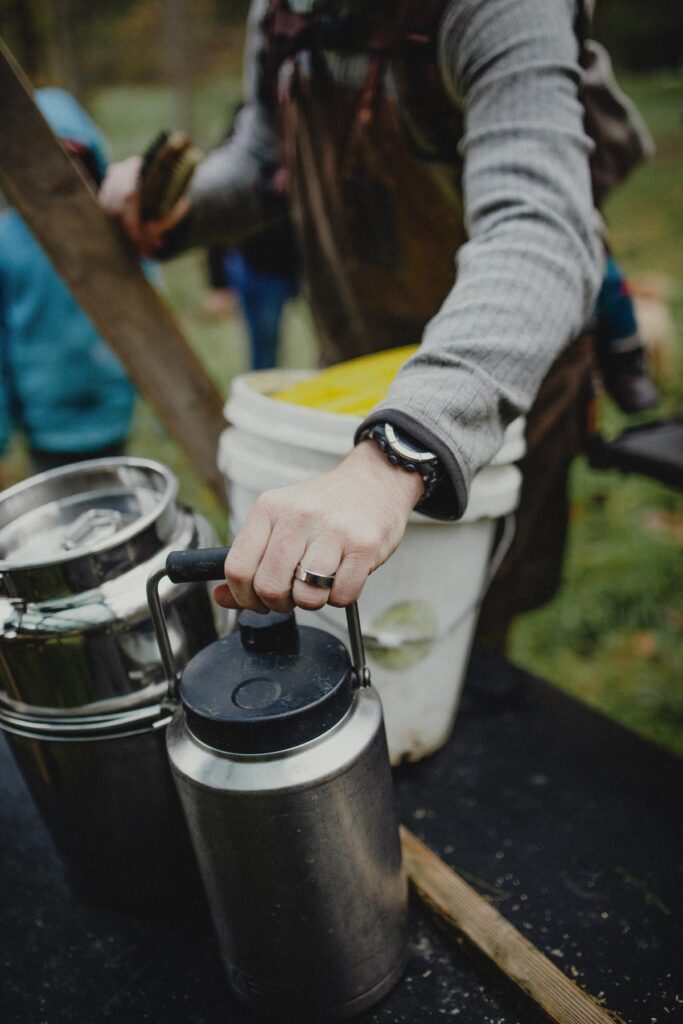
Supplies Needed
It’s best to gather your supplies before getting started. Mama cow will become impatient if you leave her tied up for too long.
- Milking Stool – A milking stool is a sturdy stool typically about 12 inches tall. It puts you at the perfect height for milking.
- Staff – These are just extensions of your arms used to encourage the cow to go where you want her. I use old Premiere One fencing posts, but you could use a broom handle or anything else you have with two to three feet of length.
- Leashes – I always bring a couple of leashes in case the cow acts extra fidgety. It’s all about control when you’re milking, you don’t want to allow your cow to get away or misbehave.
- Rope Halter – We don’t use a permanent halter on our cows because they can end up scratching with their hoof and getting it stuck in the halter. Remember, if you control the cow’s head, you control its body.
- Tote – As you can see by this supplies list, there’s quite a bit you’ll need when milking. Make it easy and get a lightweight bin or tote that will hold all your supplies.
- Two 2-Gallon Stainless Steel Buckets – Make sure you start with a clean bucket. Stainless steel and seamless are important for sterilization purposes. I bring two buckets if the cow steps in the bucket while we’re milking. Then we have a backup that’s clean and sterilized.
- Stainless Steel Reservoir w/ Lid – This isn’t required, but it’s good practice to empty the smaller bucket into a larger reservoir frequently during milk, so if the cow kicks the bucket of milk over, you haven’t lost your entire day’s worth of milk.
- A Thermos of Warm Soapy Water – I prefer to use a liquid castile soap, such as Dr. Bronners.
- Two to Three Organic Cloths (per cow) – You’ll need to clean the cow’s udders before milking, and you don’t want to dirty up a clean udder by using the same towel. Be sure you don’t use the same cleaning cloth on multiple cows as this can spread bacteria.
- Apple Cider Vinegar Spray – If you’re milking in the summer months, the flies can be very bothersome to the cow. We like to use straight-up apple cider vinegar in a plastic spray bottle to help keep the flies away.
- Soft Udder Brush – Make sure your brush has soft bristles, so it doesn’t scratch your cow’s udder.
- Stanchion – A stanchion is a sturdy structure that supports something. In this case, to keep your cow from moving around during milking. We use a mobile milking sled, so this tutorial will include milking in the pasture.
- Feed – You’ll need a way to keep your cow in one place. The easiest way to do this is with food. We feed five to ten pounds of New Country Organic alfalfa pellets per cow.
- Stainless Steel Milk Strainer – We use a stainless steel jar filtration system for bottling our milk. It has a rough filter, and we add up to three fine filters to make sure and filter out any dirt or hair that might have fallen into the milk.
- Fine Filters – We use Schwartz filters, but any fine milk filter will do.
- Milk Bottles – Quart or half gallon Mason jars work well to store the milk.
- Ice Cooler – It’s important to cool the milk quickly, but you may not have enough room in your refrigerator. The method we use is to put it in ice water. We just put cold water in a cooler with a chunk of ice in a container and add our milk bottles.
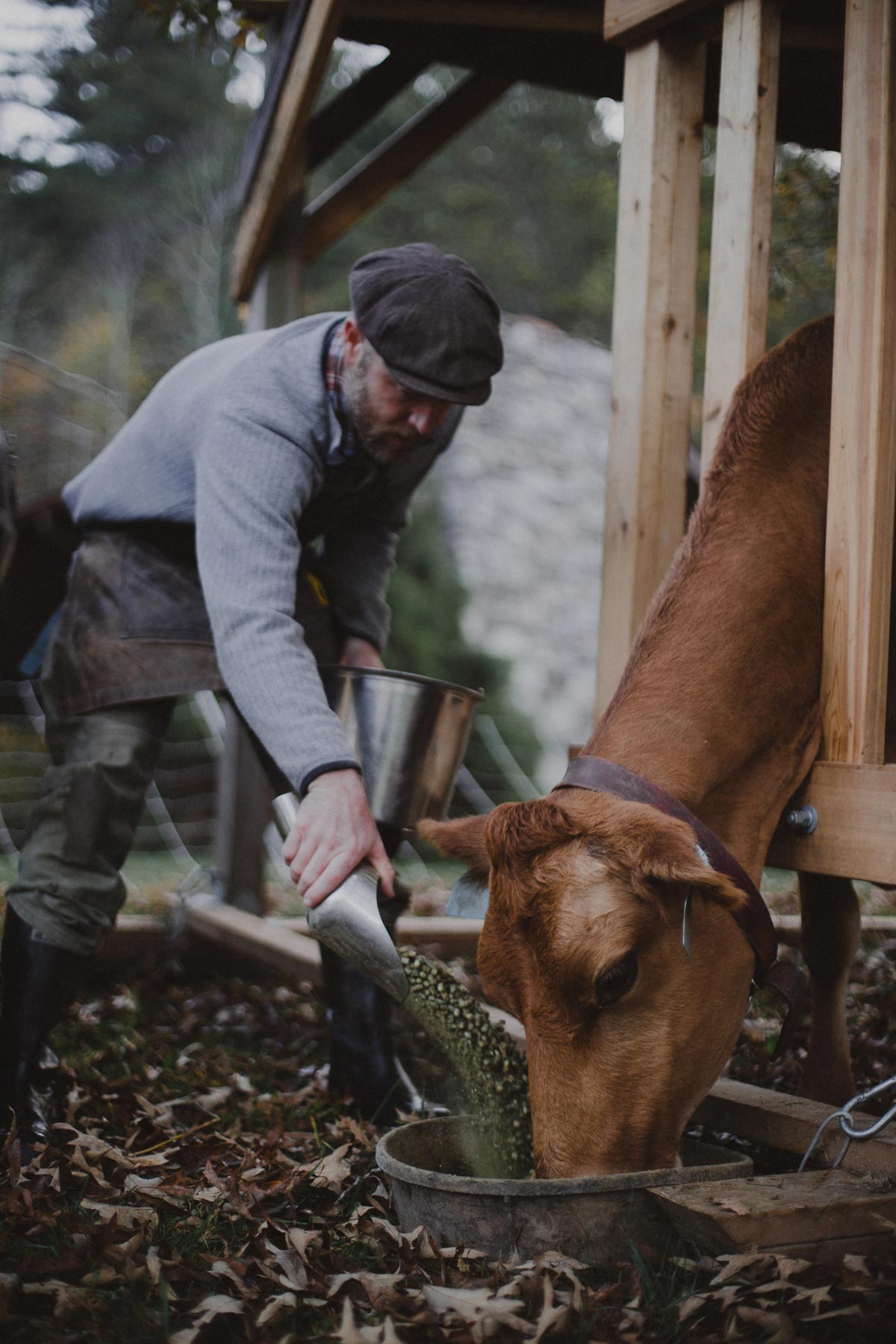

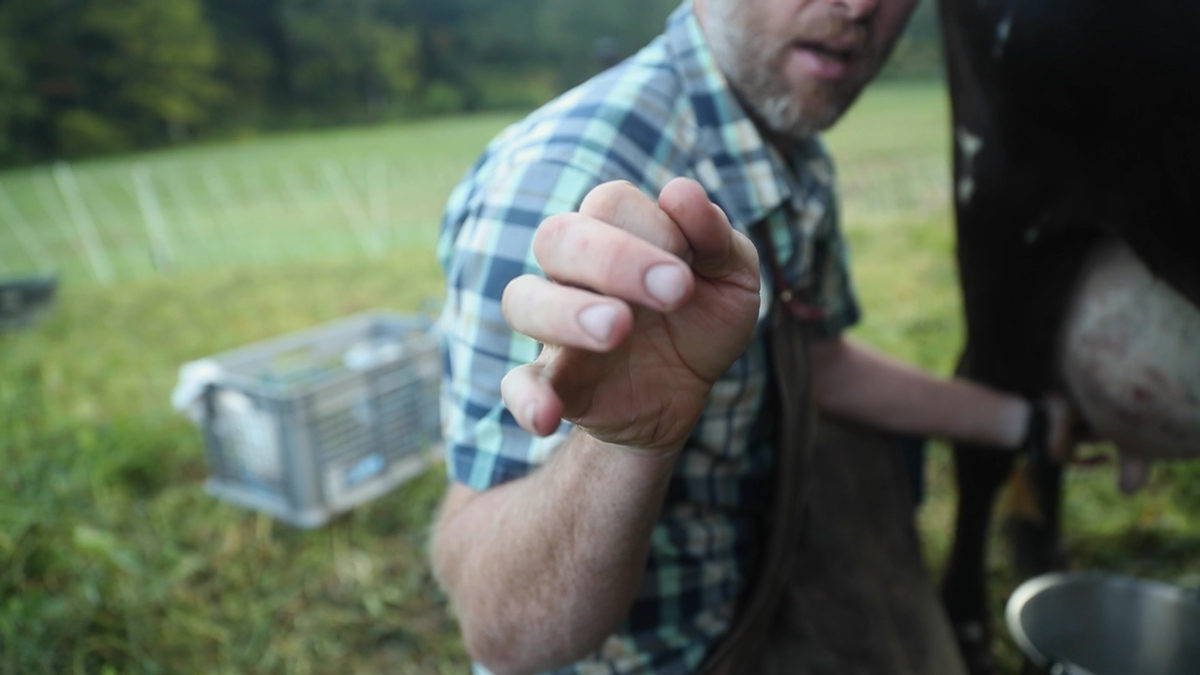
How to Milk a Cow Step-by-Step
Many dairy operations use milking machines, but we prefer to milk our cows by hand.
- Begin by tying up the calf where the mama cow can see it. We don’t want the mama cow distracted or stressed looking for her baby during the milking process.
- Guide your milk cow into and secure in the stanchion by carrying the feed bowl and placing it in front of the stanchion.
- Place one scoop (about one pound) of feed and put it into the feed bowl to allow the cow to start eating while you get everything in place.
- If it’s summertime, spray the cow down with apple cider vinegar.
- Use your soft udder brush to remove debris from your milk cow udder.
- Using warm soapy water, wipe down each teat. It’s very important to start with a clean surface. I do 2-3 rounds of soapy water depending on how dirty she is.
- Take two to three squirts off each teat (not into your bucket). This is called pre-milking or stripping. Stripping your cow is a crucial step to keeping any bacteria from getting into your milk.
- Rub the udder down with a warm soapy cloth. Be hard with this step, they’re not humans and this helps stimulate the udder for milking.
- Take another cloth and dry off the udder.
- Add the rest of the cow’s feed to the bowl.
- Take your position. If you’re right-handed, it’s easiest to milk from the right-hand side.
- Now you are ready to milk your cow into the bucket. To get the milk to come down, using your thumb and forefinger, grasp the teat and squeeze while pulling down. This will force the milk out.
- After milking for a few minutes, pick the bucket up from the top (don’t touch the bottom of the bucket, it may have been sitting in poop) and dump it into the larger reservoir and continue milking until you get five pulls in a row where no milk comes out. This is to prevent mastitis.
- After you’re done milking, run the milk through the filtration system into the milk bottles (or jars), seal them with a lid, and chill immediately. Pro-Tip: Don’t forget to date your milk so you always know which milk to use first.
